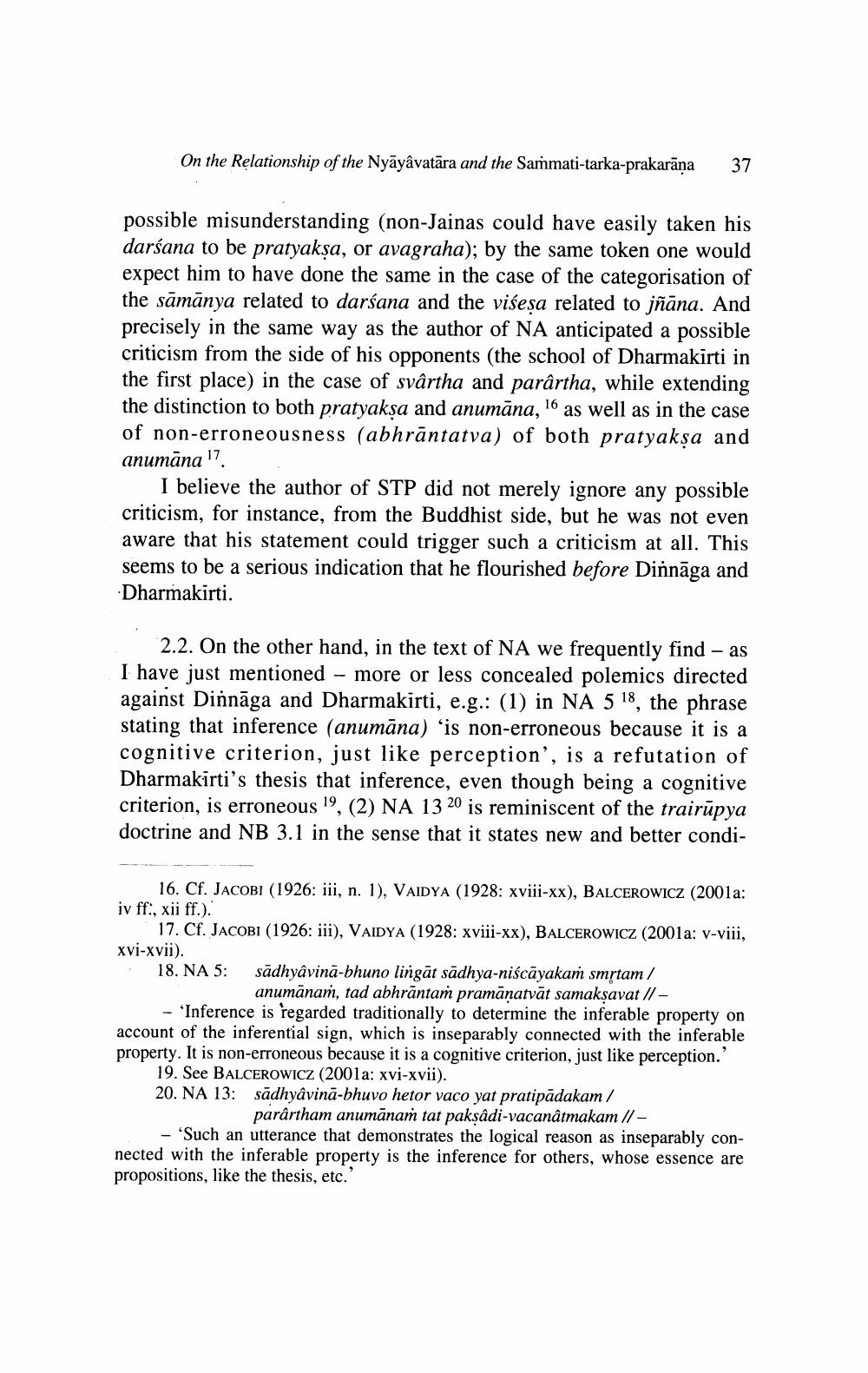Book Title: Indologica Taurinensia Author(s): Colette Caillat, Siegfried Lienhard, Irma Piovano, Saverio Sani Publisher: Comitato AIT View full book textPage 9
________________ On the Relationship of the Nyāyâvatāra and the Sammati-tarka-prakarāna 37 possible misunderstanding (non-Jainas could have easily taken his darśana to be pratyaksa, or avagraha); by the same token one would expect him to have done the same in the case of the categorisation of the sāmānya related to darśana and the višeşa related to jñāna. And precisely in the same way as the author of NA anticipated a possible criticism from the side of his opponents (the school of Dharmakirti in the first place) in the case of svârtha and parârtha, while extending the distinction to both pratyaksa and anumāna, 16 as well as in the case of non-erroneousness (abhrāntatva) of both pratyakșa and anumāna "7. I believe the author of STP did not merely ignore any possible criticism, for instance, from the Buddhist side, but he was not even aware that his statement could trigger such a criticism at all. This seems to be a serious indication that he flourished before Dinnāga and Dharmakirti. 2.2. On the other hand, in the text of NA we frequently find - as I have just mentioned – more or less concealed polemics directed against Dinnāga and Dharmakirti, e.g.: (1) in NA 5 18, the phrase stating that inference (anumāna) 'is non-erroneous because it is a cognitive criterion, just like perception', is a refutation of Dharmakīrti's thesis that inference, even though being a cognitive criterion, is erroneous 19, (2) NA 13 20 is reminiscent of the trairūpya doctrine and NB 3.1 in the sense that it states new and better condi 16. Cf. JACOBI (1926: iii, n. 1), VAIDYA (1928: xviii-xx), BALCEROWICZ (2001a: iv ff., xii ff.). 17. Cf. JACOBI (1926: iii), VAIDYA (1928: xviii-xx), BALCEROWICZ (2001a: v-viii, xvi-xvii). 18. NA 5: sādhyâvina-bhuno lingāt sādhya-niścāyakam smrtam/ anumānam, tad abhrāntam pramanatvāt samaksavat // - - 'Inference is regarded traditionally to determine the inferable property on account of the inferential sign, which is inseparably connected with the inferable property. It is non-erroneous because it is a cognitive criterion, just like perception.' 19. See BALCEROWICZ (2001a: xvi-xvii). 20. NA 13: sādhyâvinā-bhuvo hetor vaco yat pratipadakam / parârtham anumānam tat pakşâdi-vacanâtmakam // - - 'Such an utterance that demonstrates the logical reason as inseparably connected with the inferable property is the inference for others, whose essence are propositions, like the thesis, etc.Page Navigation
1 ... 7 8 9 10 11 12 13 14 15 16 17 18 19 20 21 22 23 24 25 26 27 28 29 30 31 32 33 34 35 36 37 38 39 40 41 42 43 44 45 46 47 48 49 50 51 52 53 54 55 56
